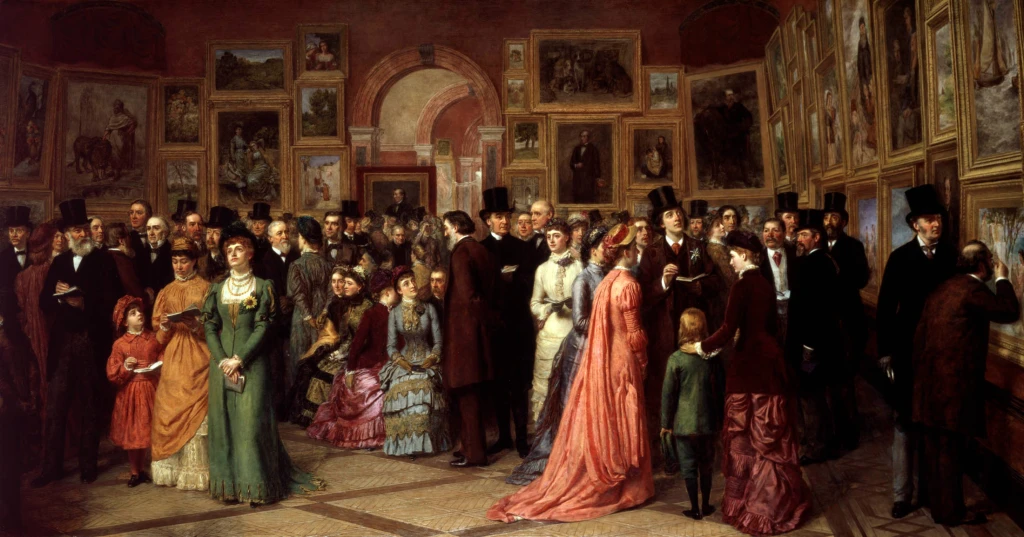In Lesson 1, we learned about the titled; in this lesson, we’ll discuss gentlefolk and the middle class.

While the largest division in English society was between the nobility and the commoners, the latter maintained many important distinctions of rank. Below the nobles and other distinguished landholders were the gentry—squires, clergy, baronets, and knights—whose income traditionally came from the tenants on their land. Then came professionals such as bishops and barristers, followed by independent landholders and bankers. Below them were the lesser tradesmen and artisans, followed by the working poor and farm laborers.
The 19th century saw this ancient order shaken up. The industrial revolution created new sources of wealth that could compete with land. No matter how wealthy a man was, though, to be accepted into society he had to own a country estate; land remained the key to status. (A character in Jane Austen’s Persuasion says, “You misled me by the term gentleman. I thought you were speaking of some man of property.”) And “new money” would never be as well regarded as old wealth; in Britain, the term “self-made man” kept its disparaging tone well into the 20th century, in contrast to its connotations in the United States.
Societal changes also raised the stature of the professions: For example, doctors such as Watson acquired some genuine scientific training (even if they continued to treat nearly everything with brandy). This new class of professionals began to insist on social acceptance. The middle class grew in size and importance, its members working in banks and counting houses and government bureaucracies.
Increasingly, the status of a commoner was what he could make it. He might convince people to treat him as a solid member of the middle class, or even as a gentleman. That involved mastering the proper social rituals and speech patterns, as well as spending like the class you aspired to. It also meant avoiding anything that smacked of manual labor; to quote Daniel Pool’s What Jane Austen Ate and Charles Dickens Knew, “the resolute display of a hopeless inability to do anything oneself became increasingly the distinguishing mark of a lady or gentleman as the century wore on.” Which, of course, meant that one needed servants.
Any household with pretensions to middle-class status—such as the home of Dr. and Mrs. Watson—had at least one housemaid or maid-of-all-work. Climbing to the highest ranks demanded an even larger staff, which sometimes provided opportunities for a clever consulting detective, as in “Charles Augustus Milverton.” What with the impressive house, the staff, and the necessary free spending, becoming and staying a gentleman was immensely expensive. On top of that, to be in the gentry one had to have a carriage; though the vehicle itself wasn’t prohibitively costly, maintaining the needed horses (which had to be fed and stabled), coachman, outriders, and groom required an astronomical amount of money.
Being a gentleman or a lady meant not having to earn one’s living. Those who were “in trade,” no matter how wealthy or accomplished, were never accepted by the ton. Distinctions had to be maintained. For example, a barrister’s wife could be presented at court, but a solicitor’s could not; a solicitor, you see, took fees directly, while a barrister acted as a consultant and was engaged and paid by the solicitor, not the client. (There were, of course, other differencess between the two types of attorney, such as education.) Because of this bias against earning money, doctors rarely rose to the peerage; for all his middle-class accoutrements, John H. Watson was still regarded as a tradesman.
Given the depressing state of the world as the Covid-19 pandemic continues, we’ll save discussing the working class and the type of grim poverty that gave us the adjective Dickensian—not to mention those beloved “street urchins” who made up the Baker Street Irregulars—for some future date.
